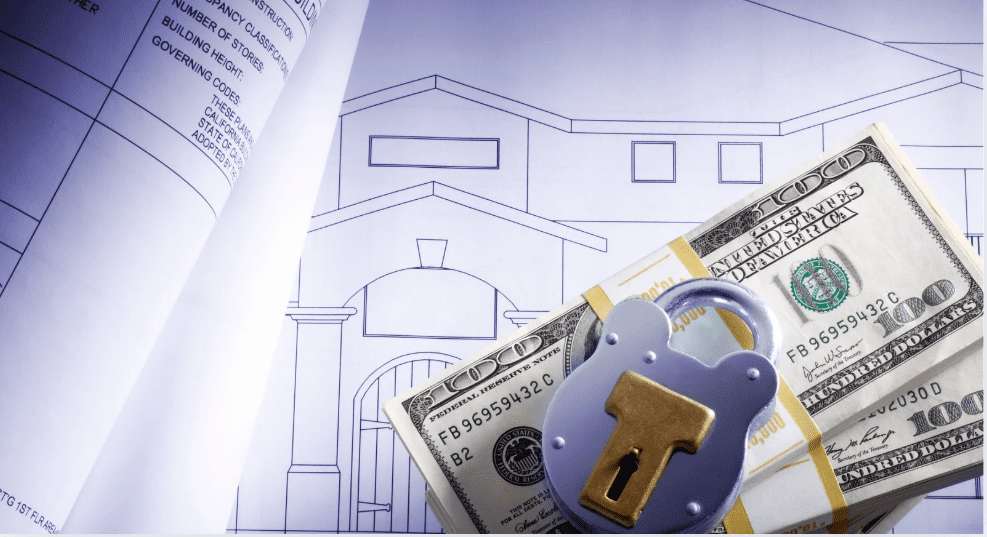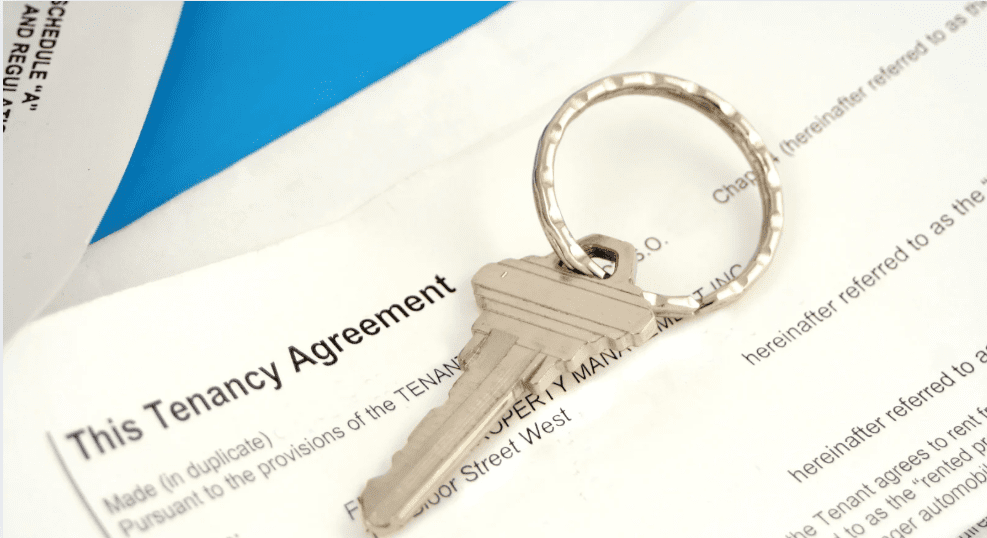Table of Contents
ToggleIntroduction
Are you moving into a new rental property and wondering about prorated rent? Whether you’re a seasoned renter or new to the real estate renting scene, prorated rent is an essential concept to grasp. If you’re considering investing in rental properties, be sure to check out our guide on Investing in Clarksville: A Guide to Buying Rental Properties. In this article, we’ll break down the ins and outs of prorated rent, explaining what it is, how it works, and why it matters. Let’s dive in!

What is Prorated Rent?
Prorated rent is a method carefully employed in the rental industry to calculate and adjust the rent amount when a tenant moves in or out of a property on a day other than the first or last day of the month. Its primary objective is to guarantee that tenants pay only for the days they physically occupy the rental unit, preventing them from being unjustly charged for the entire month.
How Does Prorated Rent Work?
Let’s define the prorated rent calculation process with a practical example. Consider a scenario where the monthly rent is $1,200, and the lease commences on the 15th of the month. As you’re occupying the property for only half of the month, the prorated rent is calculated using the formula:
Prorated Rent = (Monthly Rent / Number of Days in the Month) × Number of Days Occupied
For this case: Prorated Rent = ($1,200 / 30 days) × 16 = $640
Prorated Rent Calculator
$0.00
Formula: (Monthly Rent ÷ Days in Month) × Days Occupied
When Do You Encounter Prorated Rent?
Prorated rent becomes a crucial factor whenever a tenant’s move-in or move-out date deviates from the standard start or end of the monthly rental cycle. This scenario commonly arises when a lease begins on a date other than the 1st or concludes on a date other than the last day of the month.
Calculating Prorated Rent: A Step-by-Step Guide
While the calculation of prorated rent might initially appear daunting, it’s, in fact, a straightforward process. To calculate the prorated rent, follow these step-by-step guidelines:
- Identify the Monthly Rent: Begin by ascertaining the total rent for the month as stated in the lease agreement.
- Determine the Number of Days: Count the specific number of days you’ll be occupying the property during that particular month, considering your move-in date.
- Divide by the Number of Days in the Month: There are typically 30 days in a month, but sometimes 31 days. Divide the monthly rent by the total number of days in the month.
- Multiply by Days Occupied: Multiply the obtained result by the number of days you’ll be residing in the unit and you will get the prorated rent amount.
Advantages of Prorated Rent
Prorated rent offers numerous benefits for both landlords and tenants, contributing to smoother rental transactions and fairer financial arrangements. Let’s explore some of the advantages in detail.
Fairness and Accuracy
One of the primary advantages of prorated rent is its ability to ensure fairness and accuracy in rental payments. By calculating rent based on the actual number of days a tenant occupies the property, prorated rent eliminates the need for tenants to pay for days they did not utilize the space fully. This fairness fosters a positive landlord-tenant relationship built on trust and transparency.Flexibility for Tenants
Prorated rent provides tenants with greater flexibility, especially during transitional periods such as moving in or out of a rental property. Instead of being tied to rigid monthly payment schedules, tenants can pay only for the days they inhabit the premises. This flexibility can be particularly advantageous for tenants with fluctuating move-in dates or lease durations that do not align perfectly with calendar months.Cost Savings
For tenants, prorated rent can result in cost savings, especially when moving into a new rental property. Instead of paying the full month’s rent for only a portion of the month, tenants only need to cover the prorated amount, reducing their upfront expenses. This cost-saving aspect can be particularly beneficial for individuals on a tight budget or those facing unexpected housing transitions.Improved Vacancy Management for Landlords
From a landlord’s perspective, prorated rent aids in vacancy management and revenue optimization. By prorating rent for new tenants based on their move-in dates, landlords can minimize income loss during transition periods. Additionally, prorated rent encourages quicker occupancy, as tenants may be more inclined to move in sooner if they are only responsible for paying for the days they actually reside in the property.Challenges with Prorated Rent
Prorated rent undoubtedly offers benefits for both landlords and tenants, but it also presents certain challenges that require careful consideration and management. Let’s explore some of the key challenges associated with prorated rent and how they can be addressed.Complexity in Calculation
One of the primary challenges of prorated rent lies in its calculation. Determining the accurate prorated amount involves considering various factors, including the monthly rent, move-in or move-out dates, and the number of days in the billing cycle. This complexity can lead to confusion and errors if not handled meticulously.Potential for Misunderstandings
The intricate nature of prorated rent calculations increases the potential for misunderstandings between landlords and tenants. Without clear communication and detailed explanations, tenants may struggle to understand how their rent is prorated, leading to disputes or dissatisfaction. For further assistance, tenants can access the Tenant Portal with Screening Services, which provides valuable resources and support. Similarly, landlords may face challenges in conveying the proration process effectively, resulting in confusion on both ends.Billing and Payment Issues
Managing prorated rent billing and payments can pose challenges for landlords, particularly in properties with frequent turnover or varying lease durations. Ensuring timely and accurate billing for prorated amounts requires efficient record-keeping systems and diligent monitoring. Additionally, tenants may encounter difficulties in budgeting for prorated rent payments, especially if they are not accustomed to this payment structure.Compliance and Legal Considerations
Prorated rent calculations must adhere to legal regulations and lease agreements to avoid potential legal issues. Landlords must ensure that prorated rent calculations comply with local rental laws and regulations, as failure to do so could result in legal disputes or penalties. Likewise, tenants should familiarize themselves with their rights regarding prorated rent to avoid any inadvertent breaches of the lease agreement.Mitigating Challenges
While challenges with prorated rent exist, they can be effectively mitigated through proactive measures and clear communication. Landlords and tenants can address these challenges by:
- Providing Clear Documentation: Ensuring that lease agreements clearly outline the prorated rent calculation method and any associated terms can help prevent misunderstandings. Detailed documentation can serve as a reference point for both parties and minimize disputes.
- Educating Tenants: Landlords should take proactive steps to educate tenants about prorated rent and how it is calculated. Providing informational materials or conducting orientation sessions can help tenants understand their rental obligations and reduce confusion.
- Utilizing Technology: Leveraging rental management software or online platforms can streamline prorated rent calculations and billing processes. These tools can automate calculations, generate accurate invoices, and track payment histories, reducing the administrative burden for landlords and enhancing transparency for tenants.
- Establishing Open Communication Channels: Encouraging open communication between landlords and tenants is essential for addressing any questions or concerns related to prorated rent. Landlords should be accessible to answer tenant inquiries promptly and provide clarification when needed.
Tips for Tenants: Understanding Prorated Rent
To empower tenants in navigating the landscape of prorated rent, a set of actionable tips can prove invaluable:-
- Communicate Your Move-In and Move-Out Dates: Transparency is key. Communicate your intended move-in and move-out dates with your landlord to ensure accurate prorated calculations.
- Understand the Formula: Familiarize yourself with the formula used to calculate prorated rent. This not only allows you to verify the accuracy of the calculation but also empowers you in the negotiation process.
- Budget Accordingly: Moving comes with its own set of costs. In addition to other moving expenses, ensure that you budget for prorated rent to avoid any financial surprises.
Tips for Landlords: Implementing Prorated Rent
Landlords, too, play a pivotal role in ensuring a seamless prorated rent process. Here are some tips for landlords to consider:
- Clearly Outline Prorated Rent Calculation in the Lease Agreement: Prevention is better than cure. By clearly outlining the prorated rent calculation method in the lease term, you set the stage for a transparent and harmonious landlord-tenant relationship.
- Use Prorated Rent Calculators: Leverage technology to your advantage. Utilize prorated rent calculators to minimize the margin for error in calculations, ensuring that both parties are on the same page.
- Promptly Address Tenant Inquiries: Communication is key in the landlord-tenant dynamic. Respond promptly to tenant inquiries about prorated rent, fostering a positive and cooperative atmosphere.
Prorated Rent vs. Full Month’s Rent: A Comparison
To grasp the full significance of prorated rent, it’s essential to draw a comparison between prorated rent and the traditional full month’s rent. This comparison sheds light on the differences in payment amounts and timing, allowing tenants and landlords to manage their expectations during crucial lease transitions.
Legal Aspects to Consider
The legal landscape surrounding prorated rent is not uniform across jurisdictions. Different regions have varying regulations, and it’s imperative for both tenants and landlords to be aware of local laws to ensure compliance and preempt any potential legal complications.
Conclusion
In summation, prorated rent emerges as a pivotal element in the intricate tapestry of the landlord-tenant relationship. Its role in ensuring accurate and fair rent payments based on the actual days of occupancy cannot be overstated. As the rental landscape continues to evolve, prorated rent stands as a testament to the industry’s adaptability and commitment to fostering equitable transactions.
FAQs About Prorated Rent
Q. Can landlords refuse to offer prorated rent?
A. In general, landlords retain the discretion to offer or decline prorated rent. However, many landlords opt for prorated rent as a practice promoting fairness and flexibility. It’s advisable to explicitly address prorated rent terms in the lease agreement.
Q. What happens if a tenant moves out before the month ends?
A. When a tenant vacates the premises before the month concludes, prorated rent steps in to ensure that they’re only charged with daily rent amount for the days they actually occupied the property. The landlord calculates the prorated amount based on the number of days the tenant stayed, and this adjusted rent is reflected in the final payment or refund.
Q. Is prorated rent applicable to commercial properties?
A. Indeed, prorated rent is not exclusive to residential leases; it extends its applicability to commercial properties as well. The dynamics of commercial leases may lead tenants to move in or out on dates misaligned with the standard rental cycle, necessitating prorated calculations.
Q. How is prorated rent calculated if February is involved?
A. Calculating prorated rent in February follows a similar process to other months. The number of days in February serves as the denominator in the calculation. For instance, if a tenant moves in the middle of the month (15th of February, the calculation involves dividing the total of days (28 or 29 in a leap year) to the monthly rent to get the daily rental rate and then multiplying by the mid month (14 days or 15 in a leap year).
Q. Can I negotiate prorated rent with my landlord?
A. Absolutely! Tenants can negotiate prorated rent with their landlords, especially if their move-in or move-out date doesn’t align with the standard rental cycle. Open communication is pivotal; discussing your situation with your landlord and presenting a clear understanding of how prorated rent is calculated can facilitate a mutually agreeable arrangement.




